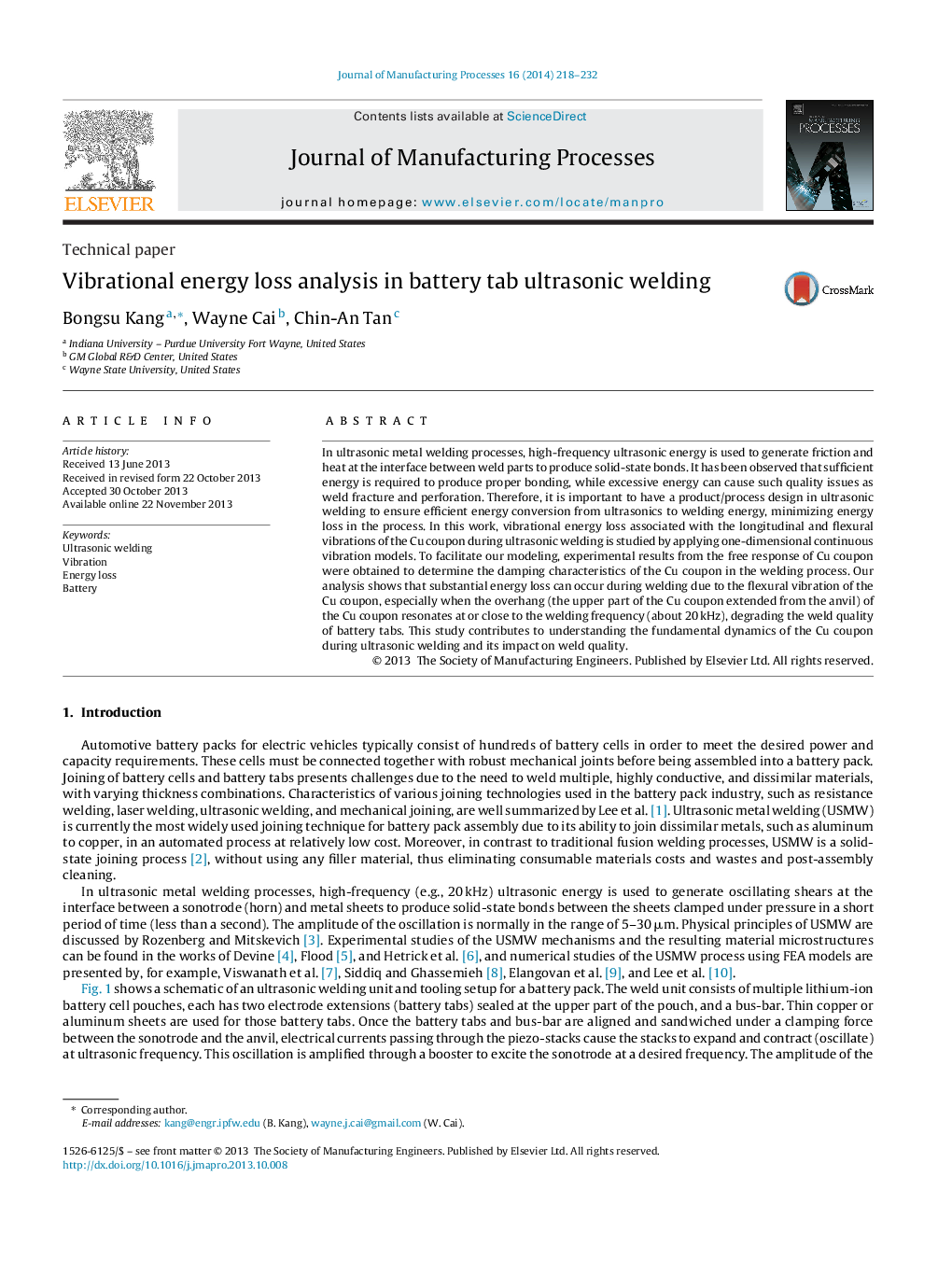| Article ID | Journal | Published Year | Pages | File Type |
|---|---|---|---|---|
| 1697125 | Journal of Manufacturing Processes | 2014 | 15 Pages |
In ultrasonic metal welding processes, high-frequency ultrasonic energy is used to generate friction and heat at the interface between weld parts to produce solid-state bonds. It has been observed that sufficient energy is required to produce proper bonding, while excessive energy can cause such quality issues as weld fracture and perforation. Therefore, it is important to have a product/process design in ultrasonic welding to ensure efficient energy conversion from ultrasonics to welding energy, minimizing energy loss in the process. In this work, vibrational energy loss associated with the longitudinal and flexural vibrations of the Cu coupon during ultrasonic welding is studied by applying one-dimensional continuous vibration models. To facilitate our modeling, experimental results from the free response of Cu coupon were obtained to determine the damping characteristics of the Cu coupon in the welding process. Our analysis shows that substantial energy loss can occur during welding due to the flexural vibration of the Cu coupon, especially when the overhang (the upper part of the Cu coupon extended from the anvil) of the Cu coupon resonates at or close to the welding frequency (about 20 kHz), degrading the weld quality of battery tabs. This study contributes to understanding the fundamental dynamics of the Cu coupon during ultrasonic welding and its impact on weld quality.
